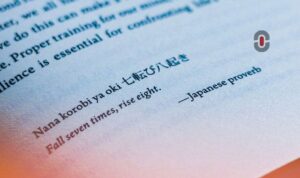In the translation process, there are some words that simply don’t have an equivalent from the source language to the target language and this is where transliteration comes in. Transliteration is used to help the user of a language better pronounce a particular word from the source language using their native phonemes. But what is a transliteration, and more importantly, how is it used in the context of Japanese to English? Moreover, what are some of the methods of performing transliteration and what are some of the key issues you need to keep in mind? We explore the answers to these questions in more detail below.
What is a transliteration and what is it used for?
Simply put, transliteration is the process of taking a word from a source language and creating its equivalent in the target language. It is not a translation of the word by any means. Instead, it is the same word that uses the target language’s phonemes to create a similar sounding word.
Transliteration is used in multiple contexts. These range from everyday usage to more complex documentation. For example, if you were going to an Indian restaurant in the UK, you would not be able to read the Hindi text and would be unable to recognize the word “नान”. However, the English transliteration would give you the word “naan” and you would know that it’s the soft, bread-like product that you enjoy.
However, it gets more complicated than restaurant menus as there is a much more complex document that needs translation and subsequent transliteration of certain words that simply don’t have an equivalent. This is the case with legal texts, business documentation, government reports and findings, and many more.
Therefore, transliteration is not a translation at all. It simply helps you better understand how a source word is pronounced in your language.
Methods of performing Japanese to English transliteration
Because of the complexity of both the Japanese and English languages, transliteration of certain words and even names of people and places is necessary for the target reader or language user to better understand what is being read or spoken. Numerous studies have been performed regarding some of the methods of performing a Japanese to English transliteration.
In general, however, the main method includes taking the word from the source language (Japanese), dividing it into phonemes, and then finding their English equivalent to create a correctly sounding (or almost identical sound) word. This can become very difficult in Japanese to English because Japanese not only has multiple writing systems (such as katakana and kanji) but also because Japanese words rarely end in a consonant. As a result, a vowel sound is usually added at the end of the transliterated English word such as “computer” to sound like “konpyūtā”.
The modern way of automatic transliteration
The modern way of automatic transliteration creates a corpus of words in the source language and then, as mentioned above, splits these words into phonemes, which is then followed by choosing the most appropriate sound to act as equivalents for each corresponding phoneme. The accuracy of automatic transliteration is not always guaranteed.
For instance, the English name of the Italian city “Venice” doesn’t have a Japanese equivalent and this city in Japanese actually uses the Italian pronunciation of “Venice” to state “Venezia”. As a result, transliterating Japanese can cause difficulties in the precision of reaching an accurate result. This is where the human touch is crucial in Japanese transliteration.
Furthermore, context is often taken out of the equation when doing a Japanese to English transliteration and this can create blunders, inaccuracies, as well as meaningless terminology.
Applications to other Asian languages
We looked at the example of “naan” in Hindi above as one aspect of transliteration. But what about other Asian languages with their own writing systems like Korean, Chinese, Arabic, Hebrew, and others? Although more research needs to be done on the methods of manual or automatic transliteration, the principles and methodology mentioned above should be the primary starting point for any transliteration project.
Once a large enough corpus of words has been created, it should also start being used in dictionaries and lexicons to ensure uniformity in pronunciation and writing. Let’s take the name of the pianist Yiruma (이루마). In English, the first sound representing the musician’s surname is “이”. However, this can be written as both “Yi” and “Lee” and can create conceptual difficulties later on.
Key issues when doing transliteration
Once a solid corpus of words has been transliterated, there are other key issues to consider for the sake of consistency and uniformity. Some of these include the following:

- Character formatting: when doing a translation and using a transliterated word, it’s a best practice to set it apart from the rest of the text by italicizing it or placing it in direct quotation marks.
- Capitalization: it’s also vital to ensure consistency when using transliterated words in terms of capitalization. A pre-established capitalization protocol will dictate whether each transliterated word is capitalized or not.
- Letter mapping: letter mapping refers to the situation when you’re dealing with a language where multiple letters create the same equivalent sound. Thereafter, consistency in this sound and letter usage is vital.
- Titles: titles of articles or documents may also require transliteration. You need to make the crucial decision as to whether you will use transliterated words in the title or whether you will use the original text in either English or Japanese.
- Popularized spelling: lastly, it’s also vital to ensure that there is consistency in spelling either by using your well-known “house style” or the case of “common usage”. This is applicable in a wide number of settings including transliterating names of popular concepts, foods, cities, etc.
Final thoughts on Japanese transliteration
Transliteration as a branch of translation is a crucial aspect of conveying information from a source language to the target language with more accuracy and efficiency. Japanese to English is a prominent example of some of the challenges that may arise irrespective of whether you’re using human or automated transliteration methods. However, there are some best practices to follow when transliterating Japanese and these should be utilized by both machines/computers in automated transliteration as well as by humans. The key consideration to keep in mind, though, is that consistency in usage is key and this should be kept top of mind with each translation word used in a translation project.
